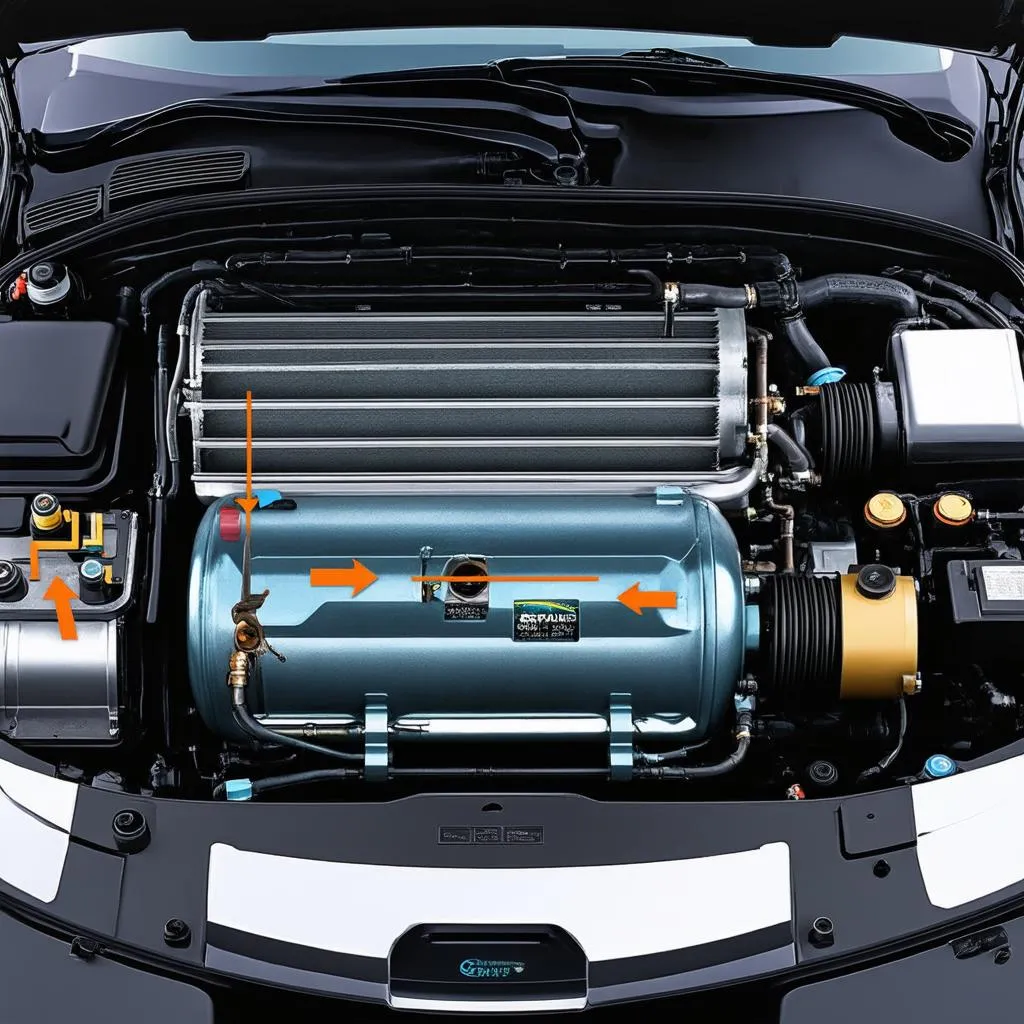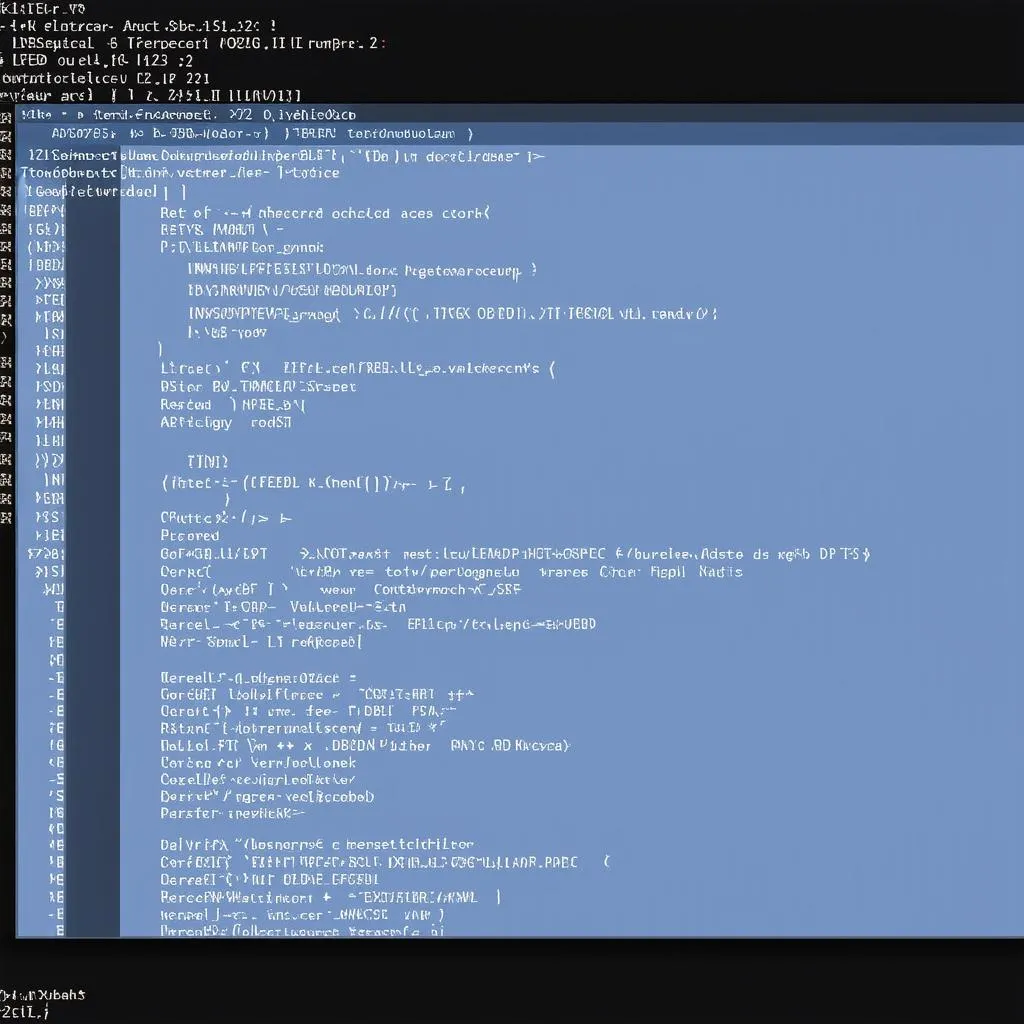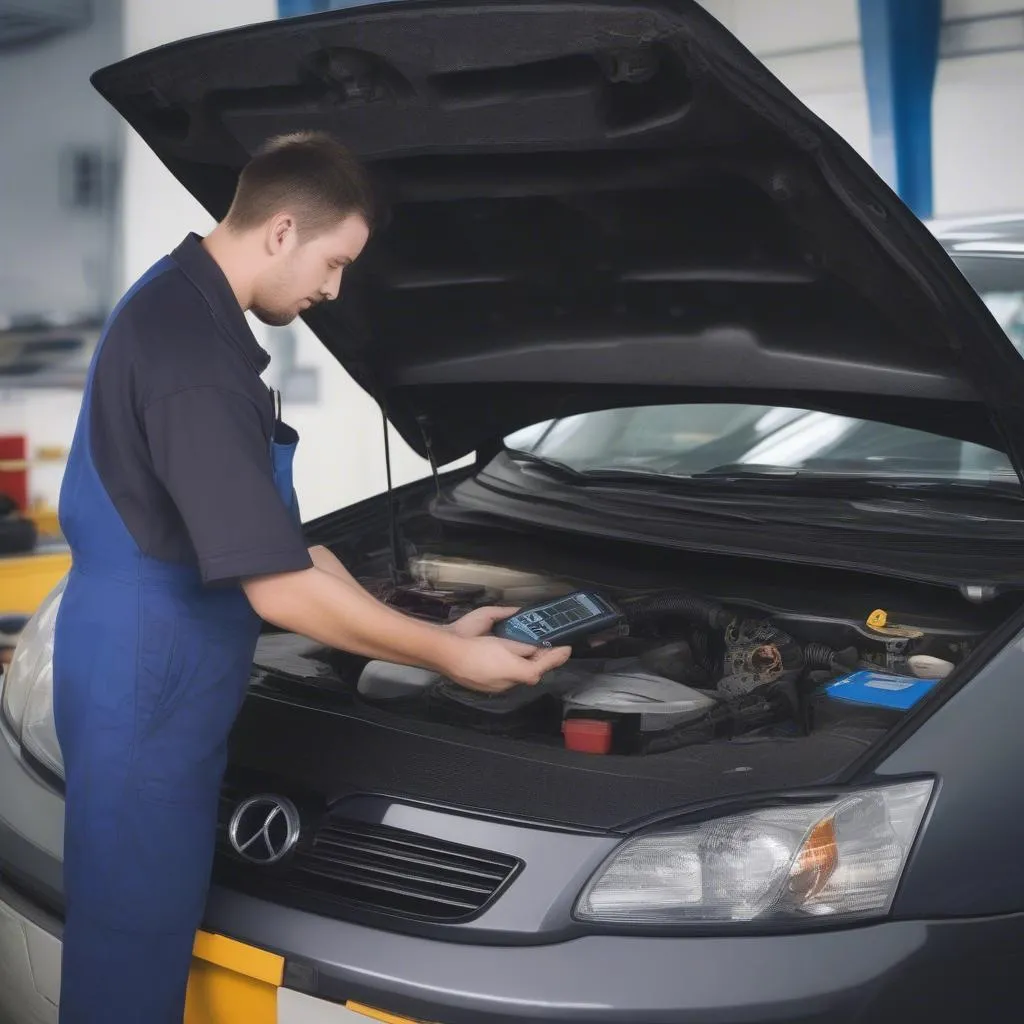A comfortable cabin temperature is essential for an enjoyable driving experience. When your car’s heating, ventilation, and air conditioning (HVAC) system acts up, it can make every drive a miserable experience. Thankfully, with a tool like VCDS (Vag-Com Diagnostic System) and a bit of knowledge, you can diagnose and even fix many HVAC issues yourself. This comprehensive guide delves into the world of Vcds Hvac, equipping you with the knowledge to troubleshoot and repair your car’s climate control system like a pro.
What is VCDS HVAC?
VCDS is a powerful diagnostic software that connects to your car’s onboard computer, primarily used in vehicles from the Volkswagen Audi Group (VAG). It allows you to access, read, and clear fault codes, monitor live data streams from various modules, and even make adjustments to certain settings.
When we talk about “VCDS HVAC,” we’re referring to using the VCDS software to specifically diagnose and troubleshoot problems related to the heating, ventilation, and air conditioning system in your vehicle.
How VCDS Helps Diagnose HVAC Problems
VCDS gives you a deep dive into your HVAC system that surpasses the capabilities of generic OBD-II scanners. Here’s how it helps:
- Read HVAC Fault Codes: VCDS reads specific fault codes stored in your car’s HVAC control module. These codes pinpoint the exact area of concern, saving you time and guesswork.
- Live Data Analysis: Monitor real-time sensor readings like refrigerant pressure, interior and exterior temperatures, blower motor speed, and more. This data helps you understand how your HVAC system is performing and identify inconsistencies.
- Actuator Tests: VCDS can activate individual components like blend door motors, recirculation flaps, and the compressor clutch to verify their operation.
- Adaptation and Coding: For advanced users, VCDS allows for modifications to certain HVAC settings and adaptations, like adjusting temperature offsets or customizing climate control behavior.
Common HVAC Issues Diagnosed with VCDS
- No Airflow: VCDS can help you determine if the issue stems from a faulty blower motor, a blown fuse, or a problem with the blower motor resistor.
- Weak Airflow: This could indicate a clogged cabin air filter, a failing blower motor, or restricted air ducts.
- Inaccurate Temperature Control: A faulty temperature sensor, blend door actuator, or issues within the HVAC control module itself can cause inconsistent temperatures.
- AC Not Blowing Cold: VCDS helps diagnose problems with the AC compressor, refrigerant levels, pressure sensors, or related wiring.
Using VCDS to Troubleshoot Your Car’s HVAC
- Connect and Scan: Connect your VCDS interface to your car’s OBD-II port and launch the software. Select the correct vehicle model and year. Go to the “Select Control Module” option and choose the module related to your HVAC system (usually labeled as “Climate Control”).
- Read Fault Codes: Click on “Fault Codes” and read any stored or pending codes. Take note of the code and its description.
- Clear Fault Codes: After noting down the codes, clear them to see if they reappear.
- Live Data Analysis: Navigate to the “Measuring Values” section. Select the relevant data groups (e.g., temperatures, pressures, actuator positions) to analyze live data streams and look for inconsistencies.
- Actuator Tests: Go to the “Output Tests” section to activate specific HVAC components to check their functionality.
 VCDS HVAC Diagnosis
VCDS HVAC Diagnosis
Tips for Using VCDS for HVAC Diagnostics
- Consult Factory Repair Manuals: Always refer to the factory repair manual for your specific vehicle model. These manuals provide wiring diagrams, component locations, and valuable troubleshooting information.
- Don’t Jump to Conclusions: A fault code points you in a general direction, but it doesn’t always mean a part is faulty. Investigate thoroughly using live data and actuator tests before replacing components.
- Safety First: When working with the AC system, be mindful of the high-pressure refrigerant lines. Refrigerant should only be handled by qualified technicians.
Advantages of Using VCDS for HVAC Diagnosis
- Dealer-Level Diagnostics at Home: VCDS empowers you to perform many of the same diagnostic procedures as a dealership, potentially saving you significant costs.
- Pinpoint Accuracy: VCDS provides detailed fault codes and live data, allowing for precise diagnosis and targeted repairs.
- DIY Empowerment: With VCDS, you gain a deeper understanding of your car’s HVAC system and can tackle many repairs yourself.
Limitations of VCDS for HVAC Diagnosis
- Complexity: VCDS can be complex for beginners. A basic understanding of automotive systems is recommended.
- Not a Magic Bullet: While incredibly powerful, VCDS can’t fix physical problems. It’s a diagnostic tool to help you pinpoint the root cause of issues.
- Vehicle Compatibility: VCDS is primarily designed for VAG vehicles.
 Car HVAC System
Car HVAC System
Frequently Asked Questions about VCDS and HVAC
Q: Can I use VCDS to recharge my AC system?
A: No, VCDS cannot recharge your AC system. Recharging requires specialized equipment and should be performed by a qualified technician.
Q: My VCDS scan shows a fault code for a temperature sensor. Do I need to replace it?
A: Not necessarily. Check the sensor’s wiring for damage or looseness first. You can also use VCDS to compare the sensor’s readings with other temperature sensors to see if its output is plausible.
Q: Can VCDS diagnose a refrigerant leak?
A: VCDS can indirectly help diagnose a leak. By monitoring refrigerant pressure readings while the AC system runs, you may observe a gradual pressure drop over time, indicating a potential leak.
Conclusion
VCDS is an invaluable tool for diagnosing and repairing your car’s HVAC system. With its ability to read fault codes, analyze live data, and test actuators, you can troubleshoot problems with greater accuracy and efficiency. While it’s a powerful tool for DIY enthusiasts, remember that safety should always come first, and certain repairs are best left to qualified professionals.
For more information and to explore a range of professional automotive diagnostic tools, visit CARDIAGTECH.com. Our team of experts is ready to assist you with all your automotive diagnostic needs.


